The Hidden Caminho to Fátima
Why hidden, you may ask?
Every year, thousands of Portuguese pilgrims take a different approach to reaching Fátima—walking long, exhausting stages of up to 78 km in a single night or day. From Casa da Lima to Fátima, they walk all day and night and family pick them up when they arrived in Fatima. Unlike other routes, there’s no dedicated app for this caminho, and almost to places to sleep, making it a true hidden treasure for foreigners.
Just rely on Casa da Lima to guide you through!
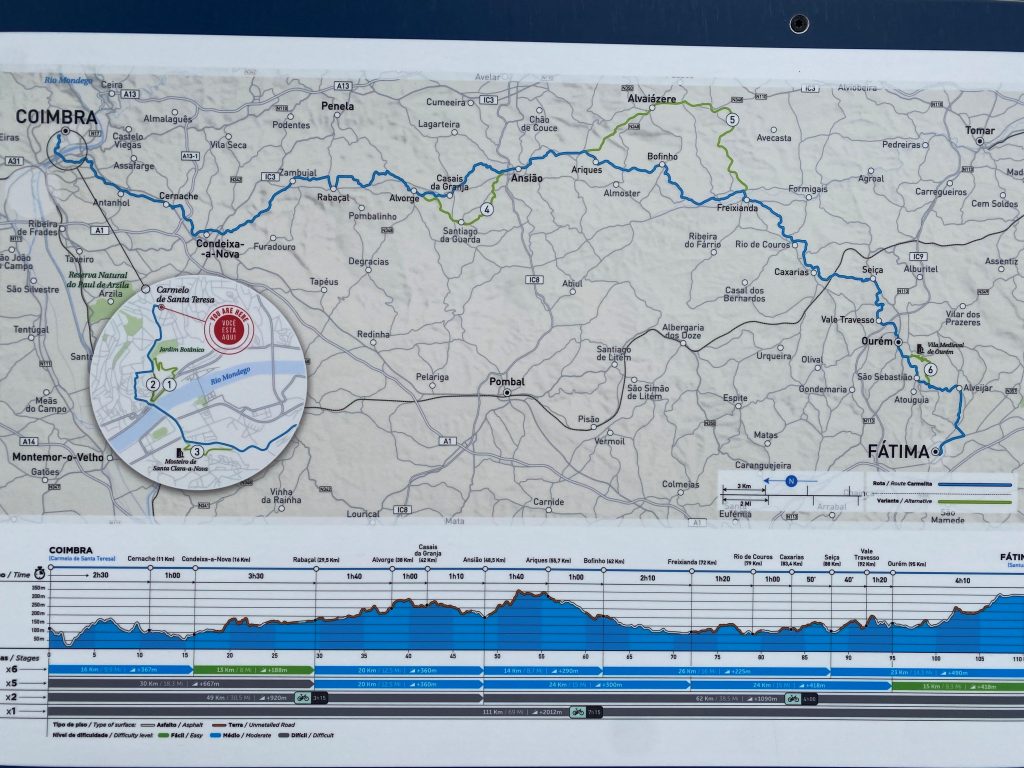
Fatima Credencials
We start with the credencials for you pilgrimage to Fatima. A special credencial to Fatima, with already included the stamp of the Carmel where Sister Lucia lived and the one from Casa da Lima. She is one of the children who witnessed the mysterious events in Fatima and who passed a way not long ago.
You still need to earn these stamps today by walking to our house.
In some churches, in cafe’s and all municipal buildings they will provide you with a stamp. It is not only to remember the places you visited, or a proof that you have walked the path, but it really is the story of your caminho together with the person in the tourist office, a bar tender or restaurant owner or who you’ll meet. It is the information that the man from the municipality gives you., it is the bartender from the cafe who can give you lots of tips and drinks! They are proud to reward pilgrims to Fatima with a stamp or just with friendliness. Really, my caminho became more interesting when I started collecting stamps in a swimming pool or local cafe. You will get to know the culture of the country you visit!

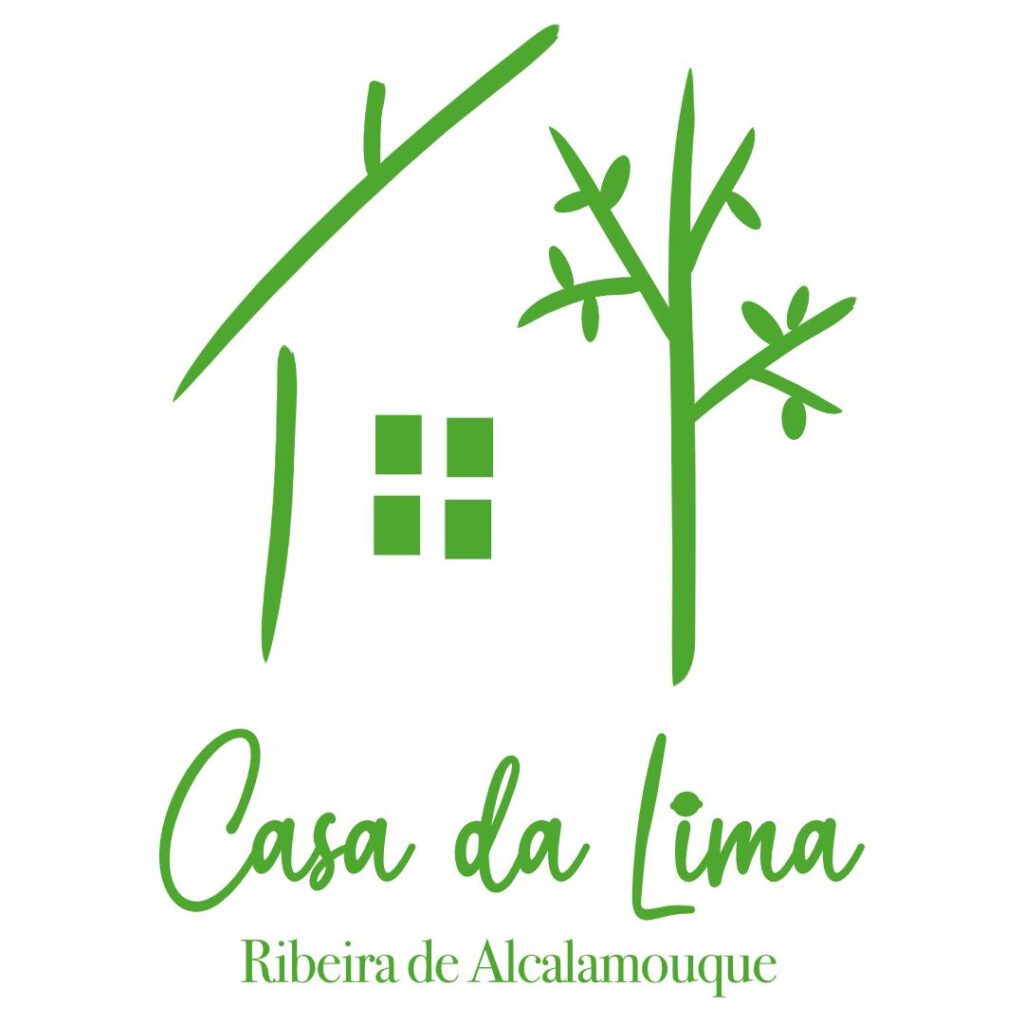

Day 1: Conímbriga – Casa da Lima (16 km ~ 3-4 hours)
We begin in Conímbriga, walking in the footsteps of the Romans. Do explore the best-preserved Roman ruins in Portugal. It is just a tenth of the whole village which had 100.000 inhabitants! Step into the roofed garden, just drop 50 cents into the machine to activate the charming mini fountains! on the picture below, the water is calm, we didn’t know that there were hidden fountains… The magic starts here. There’s also a museum to visit inside. The entrance fee is around €10.



Fonte Coberta
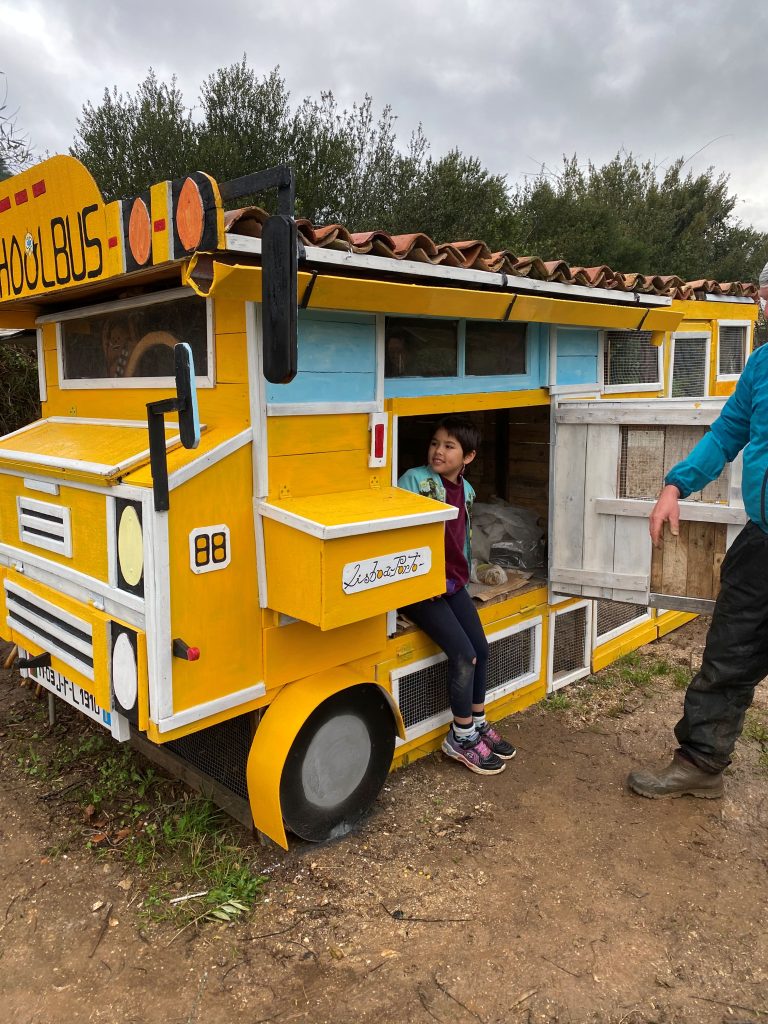
The path from Conimbriga crosses a deep valley with flowing water in winter. You’ll pass a village Poco and afterwards Fonte Coberta, a village rich in natural springs a long time ago, where locals still wash clothes in open-air stone basins. If you’re thirsty, enjoy fresh water from the public tap. You could fill your water bottle here or at Refugio Cabeca. Stop by the mini labyrinth of Fátima and the chapel to light a candle in a special place dedicated to Fatima. Then, take a break with tea, coffee, fruit, and cookies—don’t forget to enjoy the swing with a scenic mountain view! Artist Jean, made it all and he is a pilgrim too. And of course, leave a small donation for your hosts, who are walking the caminho to Fatima regularly. Creative Jean made a nice house for the chicken they like to have soon. Cinta loved it as you can see on the photo!
Romans in Rabaçal
Even if you’ve already explored the ruins of Conímbriga, make sure to visit the Roman aristocratic house ruins in Rabaçal. Across from the mini-market, a small museum offers a fascinating look into the past. For just a few euros, you’ll get a guided tour, uncovering secrets hidden beneath the sand outdoors. You have time, you are not in a hurry.
From here, you’re just 30 minutes from Casa da Lima, where you can rest and recharge before continuing your journey, the next day!
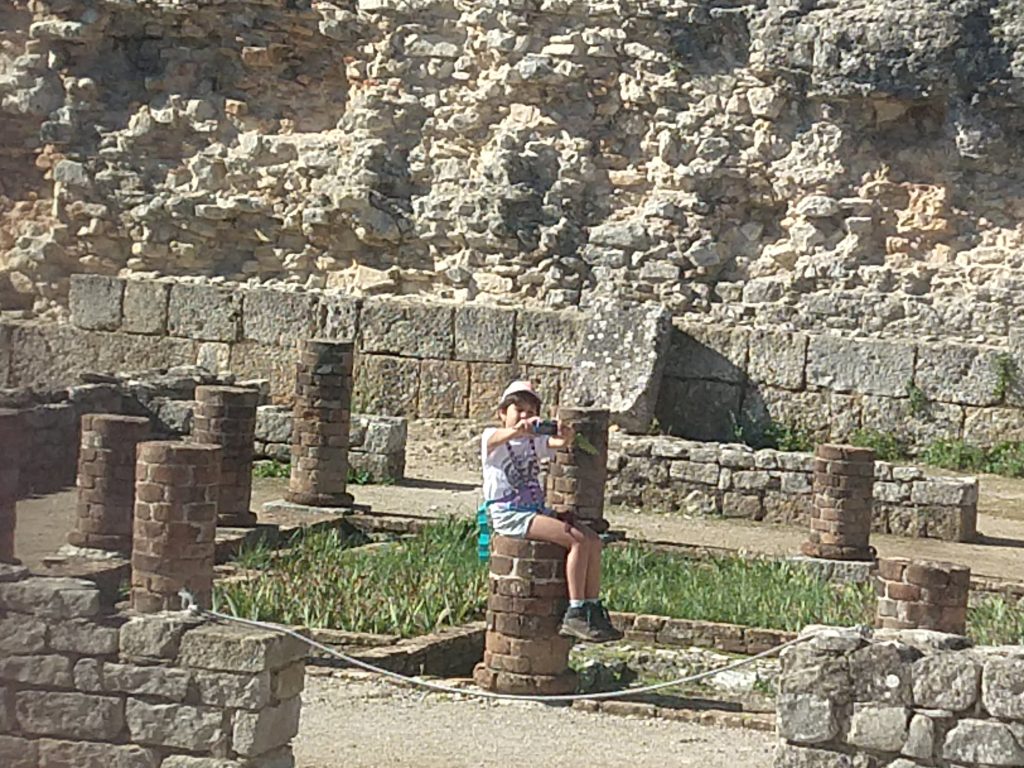
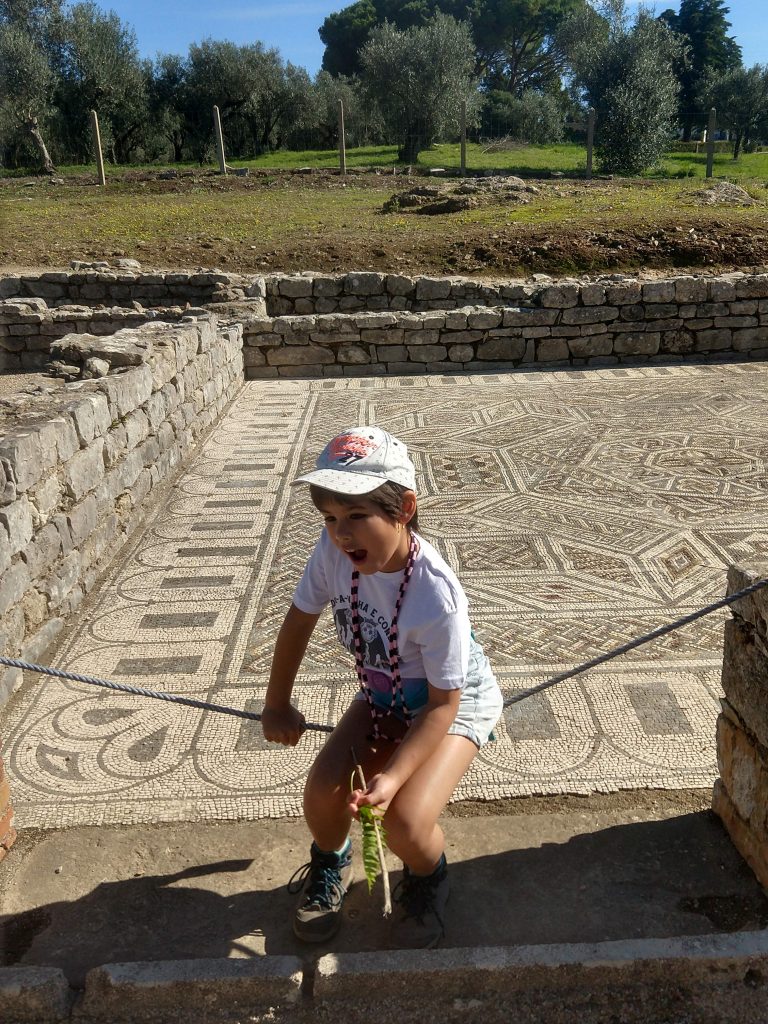
Day 2 Casa da Lima – Ansiao (17 km ~ 3-4 hours)
We walk to a beautiful dirt road via the main street of our village Ribeira de Alcalamouque. After a few hundred meters the Fatima signs turn to the left. You’ll see the milestones I made for the opposite caminho to Santiago. This stage will go up to Alvorge in one and a half hour, where you will find a restaurant to rest, drink or eat something. There is also a mini-mercado to buy some snacks for todays’ caminho.
When you continue there is a pump station in Venda do Brasil, on the road, where you can drink a coffee. I ran to this place because it was pouring when I walked this part of the caminho. You will end todays’ walk in Ansiao, the main town. You could walk through the city and see the photo’s we made below on the route. In this town there are supermarkets, bakeries, restaurants and a swimming pool. You have time for a dive, so don’t forget your bathing suit and swimming cap. But the swimming pool has all, you can borrow it for sure.
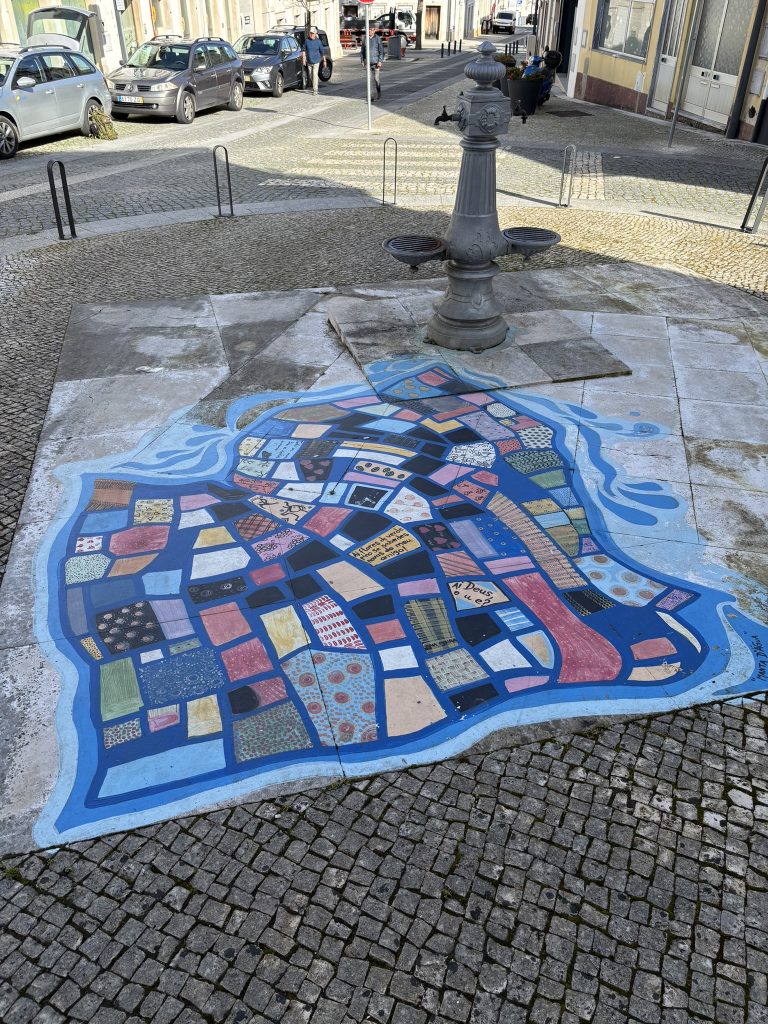
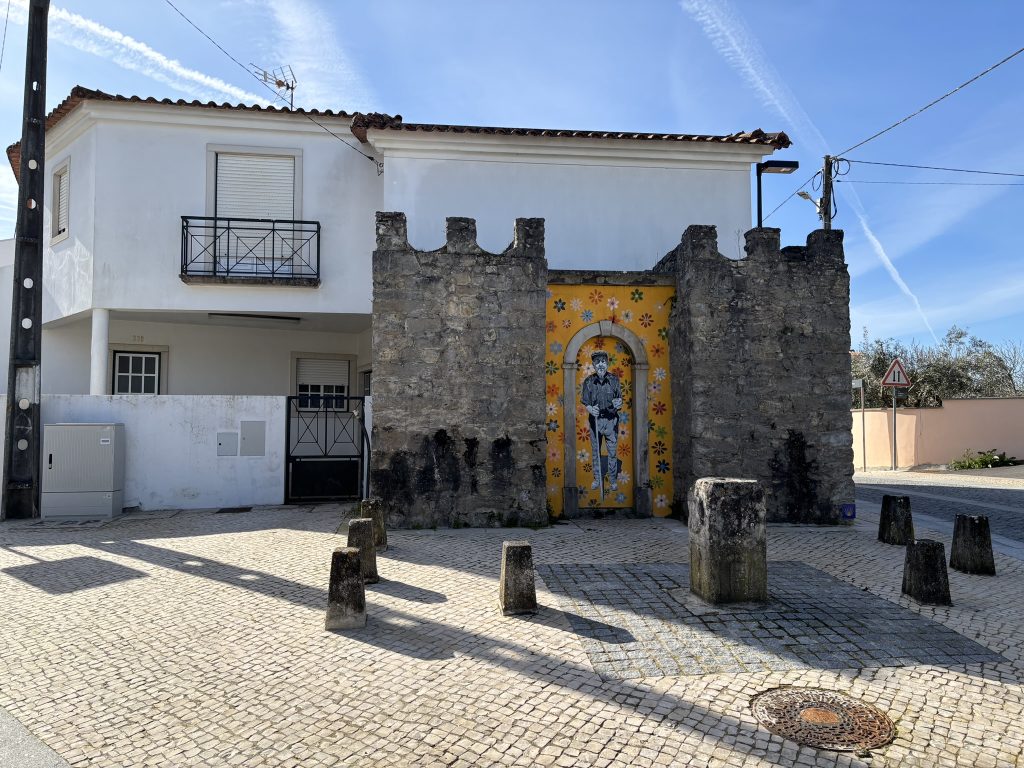
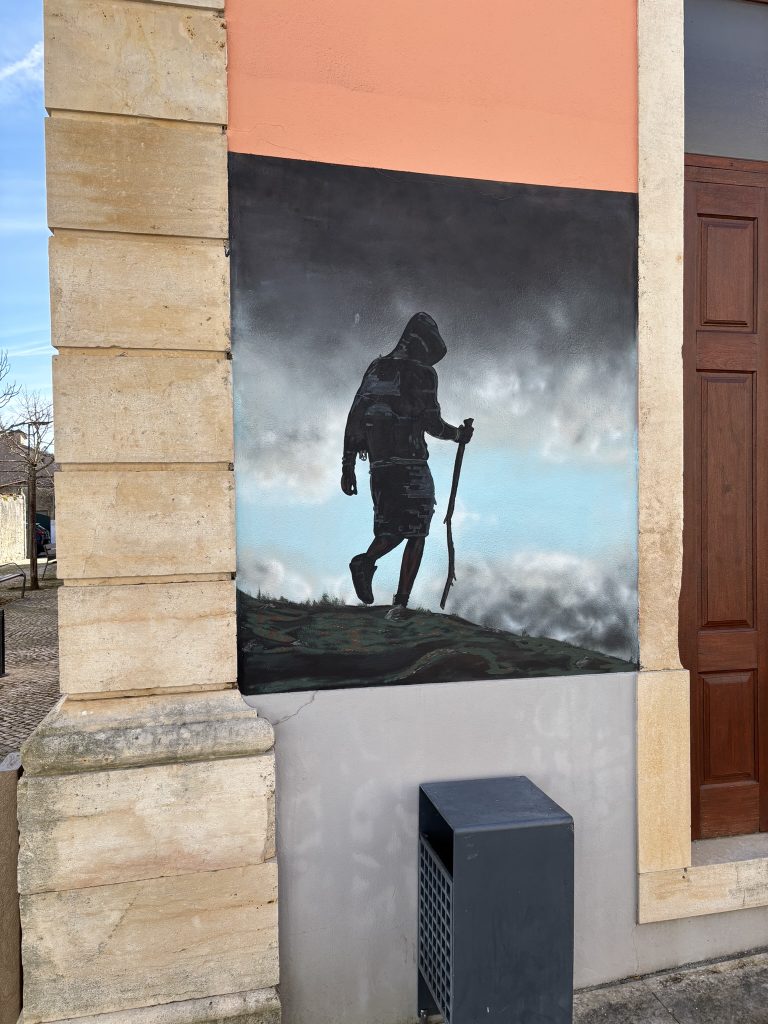
See if you walk mindfully and walk into these nice details on your route. Make sure to go into where that pilgrim on the photo is walking to, you will be rewarded with a stamp and the sight of a huge Santiago shell! At least if they are open. Normally we are earlier on the road, than their opening hours… but during the afternoon, when arriving in Ansiao, it is open.
Day 3 Ansiao – Freixianda (25 km ~5-6 hours)
On the third day, we take on a strenuous (see the height differences on the photo below) 25 km walk, following a beautiful route along the water. There are plenty of spots to refill your bottle, ensuring you stay hydrated throughout the journey. We start somewhere in Ansiao, where you stopped yesterday. This town is the perfect place to grab something for the road, as there are very few stops along the way. Just a few kilometers before the end, you’ll find one café where you can enjoy a well-deserved drink. As you enter the town, you’ll see the church, a charming square with sometimes, neatly trimmed olive trees, and a small mini mercado. If you take a moment to translate the message on their window of the supermarket, you’ll definitely want to step inside! Jaap-Willem and the first pilgrims really loved this stage. It was quite long, but it was a stunning one.
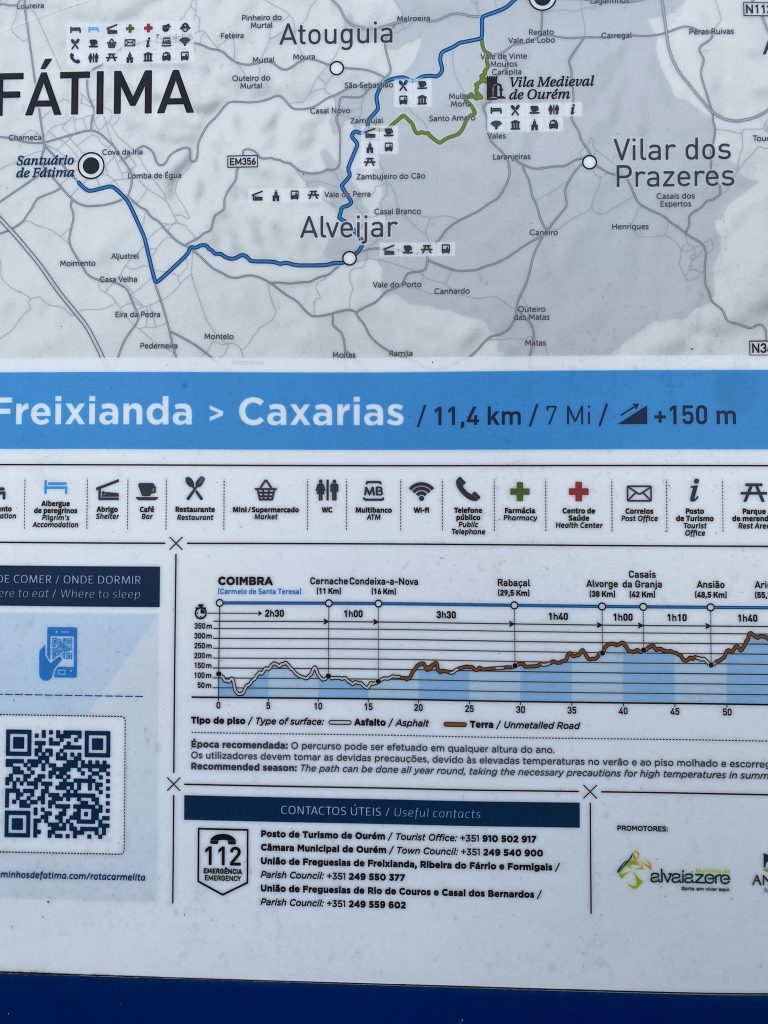
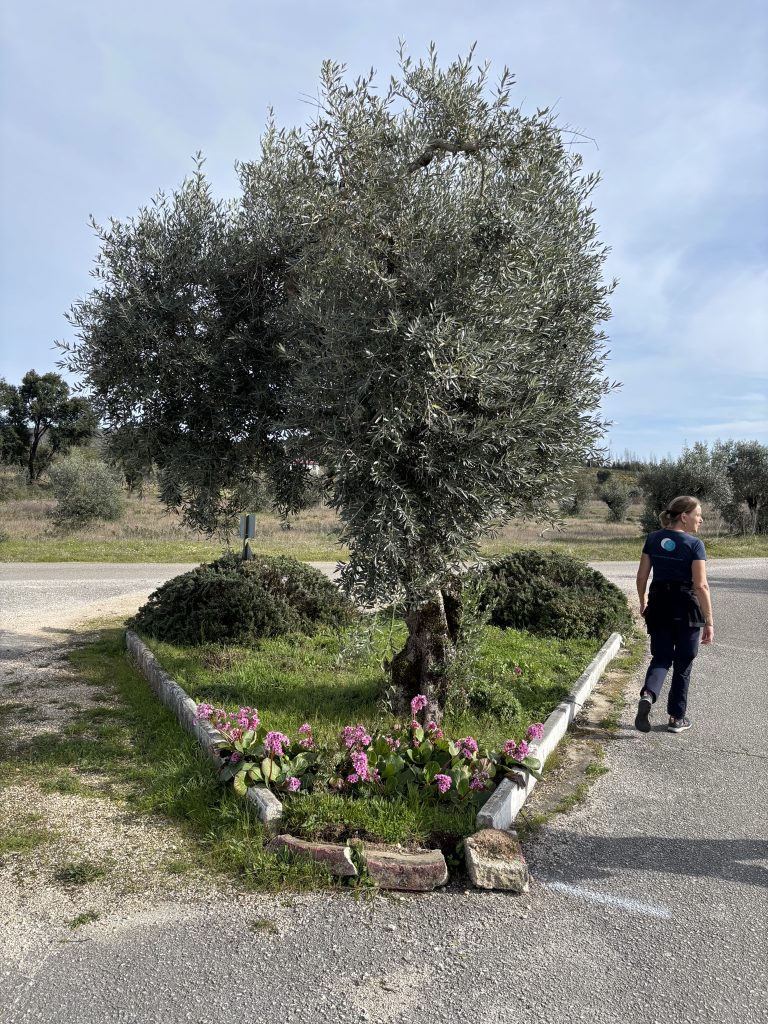
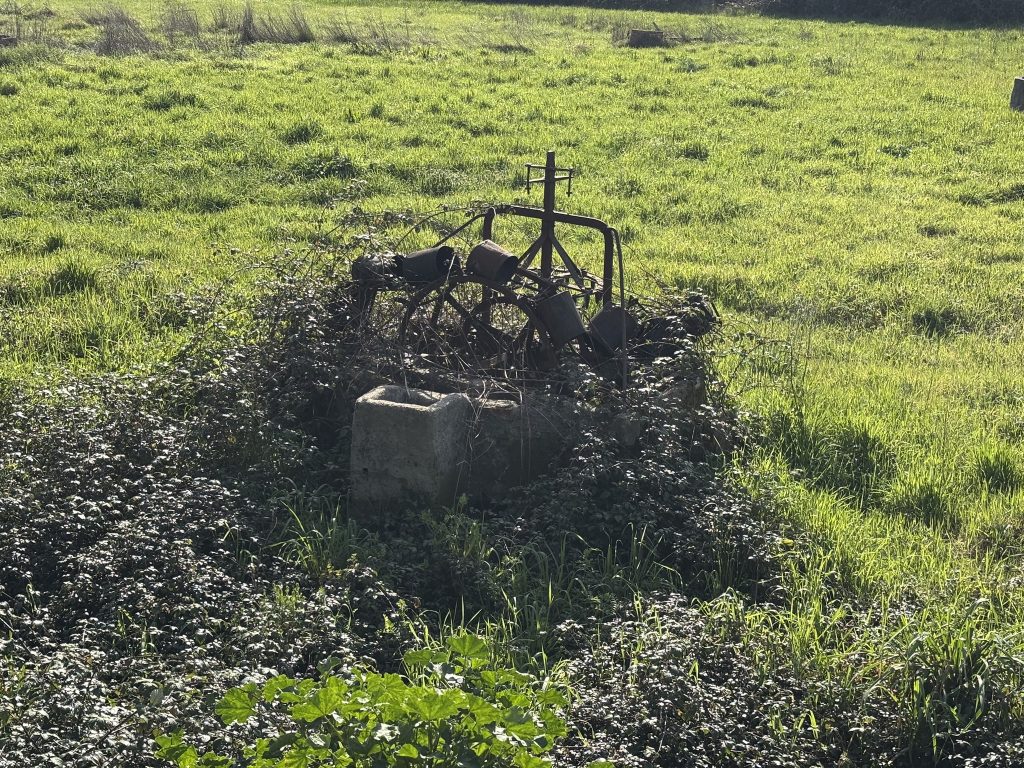
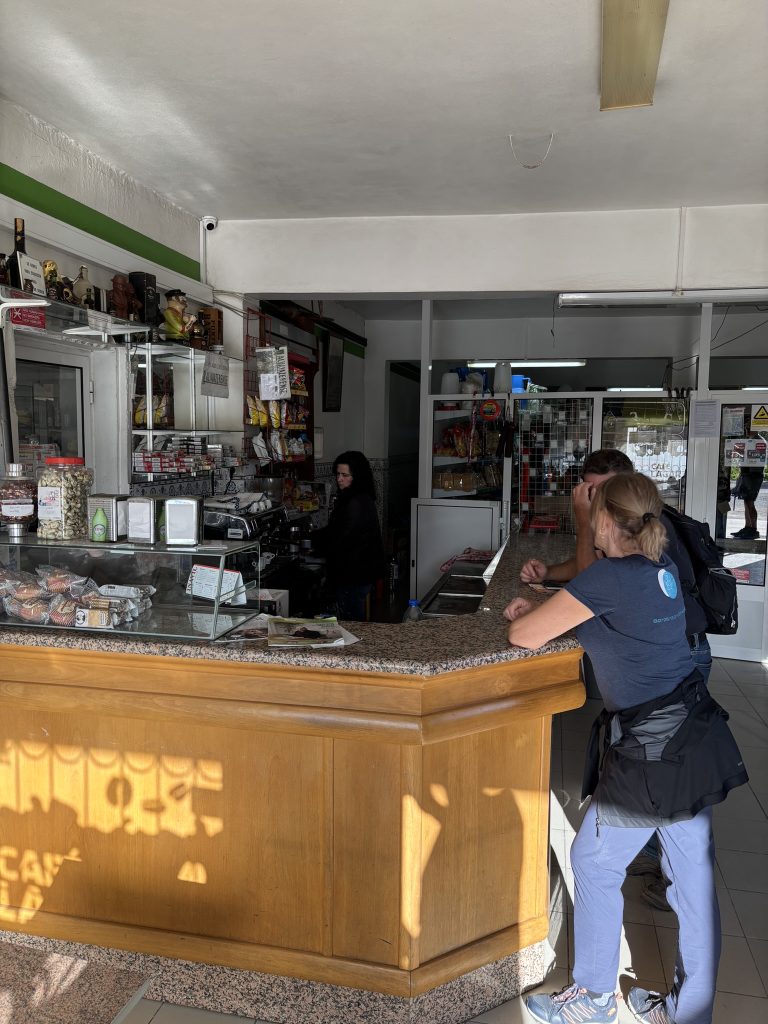
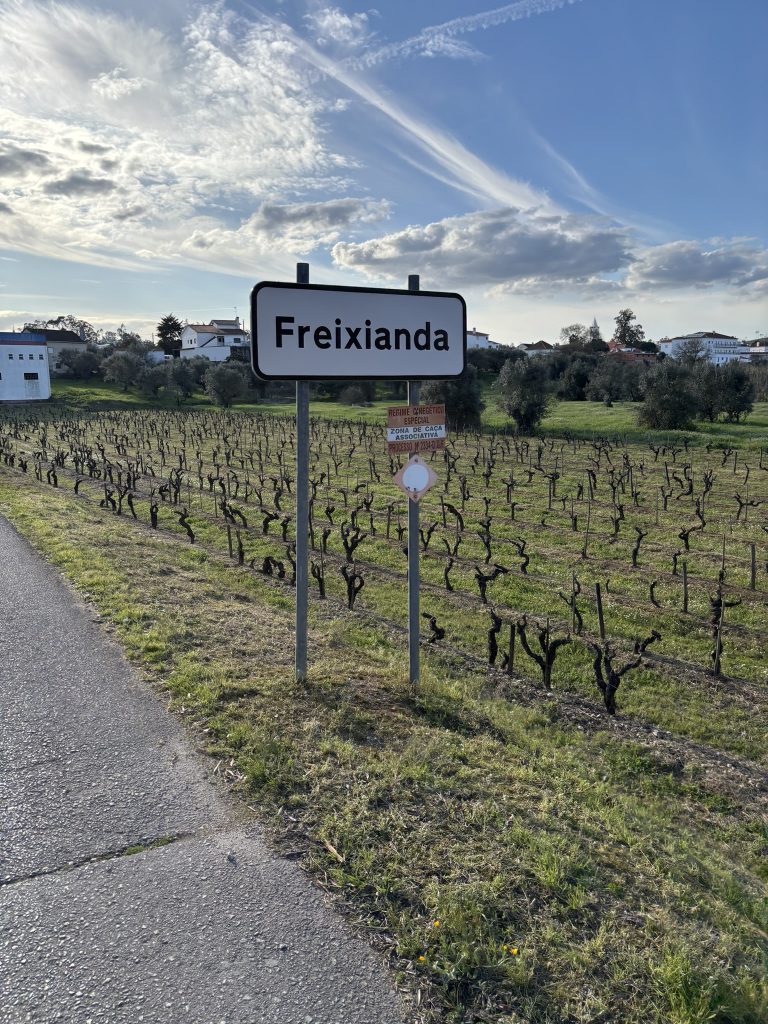
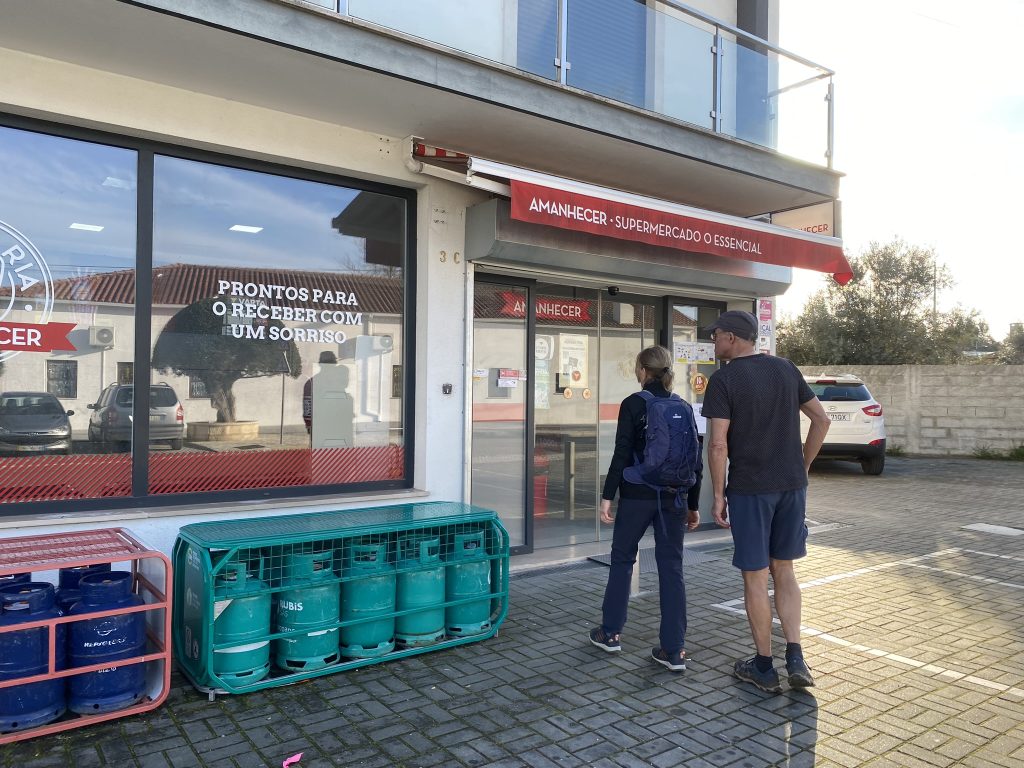
Day 4 Freixianda – Ourem (23,5 km ~5-6 hours)
You can get some snacks for todays walk.In the minimarket or the pasteleria nextdoor in Freixianda.
We have a tough day today, similar as yesterday. An amazing route but since this is the fourth day of your caminho, you may start feeling your legs, feet or your whole body ache. When I walked the 3th and 4th day, I was so stiff it was hard to even move around when I was waking up.
I met a lovely Korean pilgrim who already walked a tough road for a week.
She said: “Oh Ay Lin, no problem you feel this way now, and every morning I feel so stiff as if I can’t walk, but still, every day I manage to finalise my caminho day.”
With her smiling face, I know it is pilgrims pain for the morning moments and it will fade away once you’ll start walking again!
If you see the church below on the square, you could take a rest and there are toilets on the right of this building. Also there are lights in the open kitchen and you can charge your phone or lamp. if you need to:-). Who knows.

Ourem is a big city with large supermarkets. You will see some burned forests walking here. The last years the fires burned all down. If you have energy you can go to the castle! There route splits in an alternative route to the castle. You could do that on tomorrows stage.
The Legend of Princess Fátima and Oureana
In 1158, during the time of the Christian Reconquest, a noble knight, Gonçalo Hermingues, known as Traga-Mouros, caught sight of a beautiful princess on top a tower near Alcácer do Sal.
Her name was Fátima, the only daughter of the emir, promised in marriage to her cousin Abu. But fate had other plans. The Christian knight fell deeply in love with the young Muslim princess.
For her safety, Fátima rarely left the tower where she lived with her maids. However, it was known that she would take part in the Festival of Lights—a rare opportunity that Gonçalo saw as his chance to change both their destinies.
On the night of the festival, Gonçalo and his men launched a daring raid, seizing the princess from the procession. Abu rushed to rescue his betrothed but perished in the battle against the Christians.
Fátima was now free from her arranged marriage, chose to convert to Christianity and took the name Oureana. She and Gonçalo were married, and in honor of their love story, the town where they first settled was named Fátima, after her Muslim name. A few kilometers away, where they later made their home, the town was named Oureana—over time, evolving into what is now Ourém.

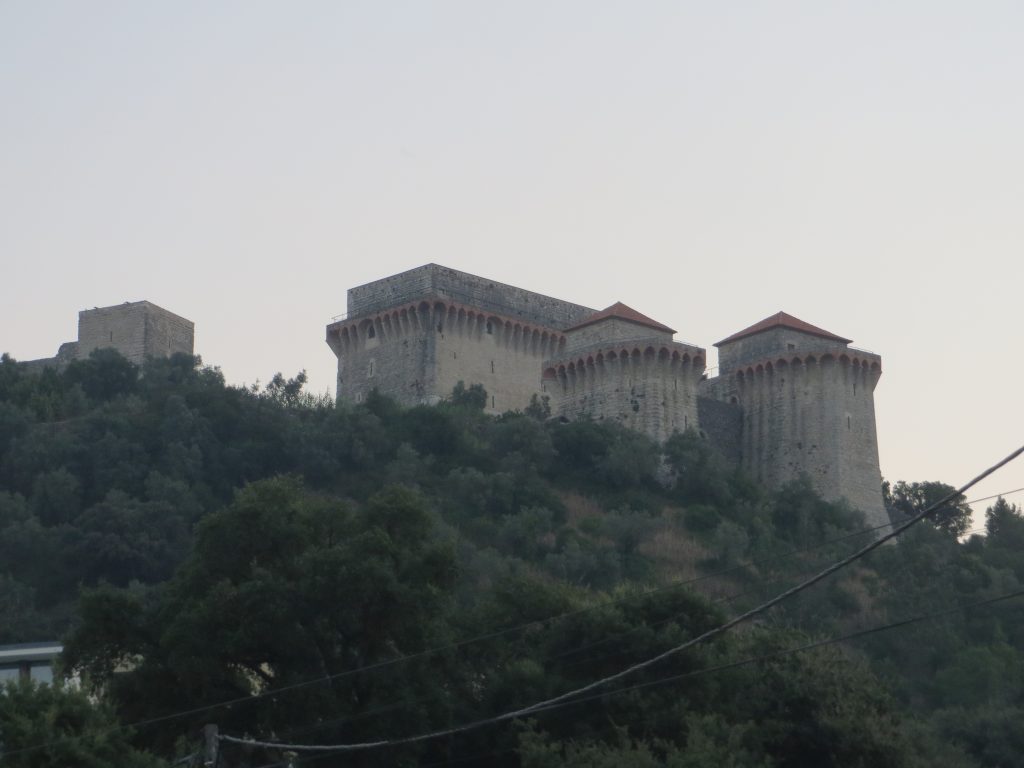

Day 5 – Sanctuary of Our Lady of Fátima (16 km) 3-4 hours
One of the largest Catholic pilgrimage sites in the world. This sacred site honors the 1917 apparitions of the Virgin Mary to three shepherd children; Lúcia, Francisco, and Jacinta. These took place in Cova da Iria, a rural property once owned by Lúcia’s family, who later donated the land to the sanctuary. Five of the six apparitions occurred here, making it a place of deep spiritual significance. If you are on one of the days when Maria appeared, it is crowded, and full of vibes. Pilgrims arrive crying, laughing and full of emotions. However, if you are there on an ordinairy day, it is a large empty square.
No cafes on the route. Nothing to drink or eat. At some point you can choose to go to the left or to the right. The Carmelita arrow goes left and the blue arrow right. Take the left one. It is the Carmelite route we are following (The other one is the path from Tomar to Fatima).
Now you’ll pass the village of the children and the places where they met de angels and Maria one time.

You will enter Fatima via the ‘backdoor’. At the end of the route there is a small dirt road with lots of stones which goes up to Fatima. It is in the shadow. In Winter this road becomes a stream. When you enter the village you’ll see a house being renovated, already for a long time. Looks like they will never finish. You see an ugly cement thing, which we cannot call a house yet. They are working on the street, so there is not a real nice ‘entre’ to the real thing here.
Walking into Fatima you first enter the village Aljustrel. This is the village where the shepards live. It leads to their houses. Go there and experience the story of the shephards of Fatima. The ones who are very thourough will see that the blue arrow to Fatima, became a different one. It says Medio ejo instead of Carmelita. Now you walk on your inutition and the crowds. People go to the houses, then to the angels, and the place where they saw Maria.



It is not a short walking day today unlike the amount km tell you. In Fatima there are several places where the children saw the angels and Maria. We are visiting these sacred and touristic places.
One of the children Lucia lived in Coimbra in the Carmelite cloister. That is also why the Carmelite route starts in Coimbra in front of the cloister. Recently she died. In her memory they made an archive and her humble life as a sister is described here. If you are very religious and you would want to go here it is possible. I heard lots of buses with pilgrims go to this place. When we visited it looked like an abandoned place. For us, the place where the children are buried, first in Ourem and when the Sanctuary in Fatima was built just like the children said Maria told them, is more intersting and not totally not abandoned! On the 12 May or October you are there with hundreds thousands others! It will never be abondoned in Fatima
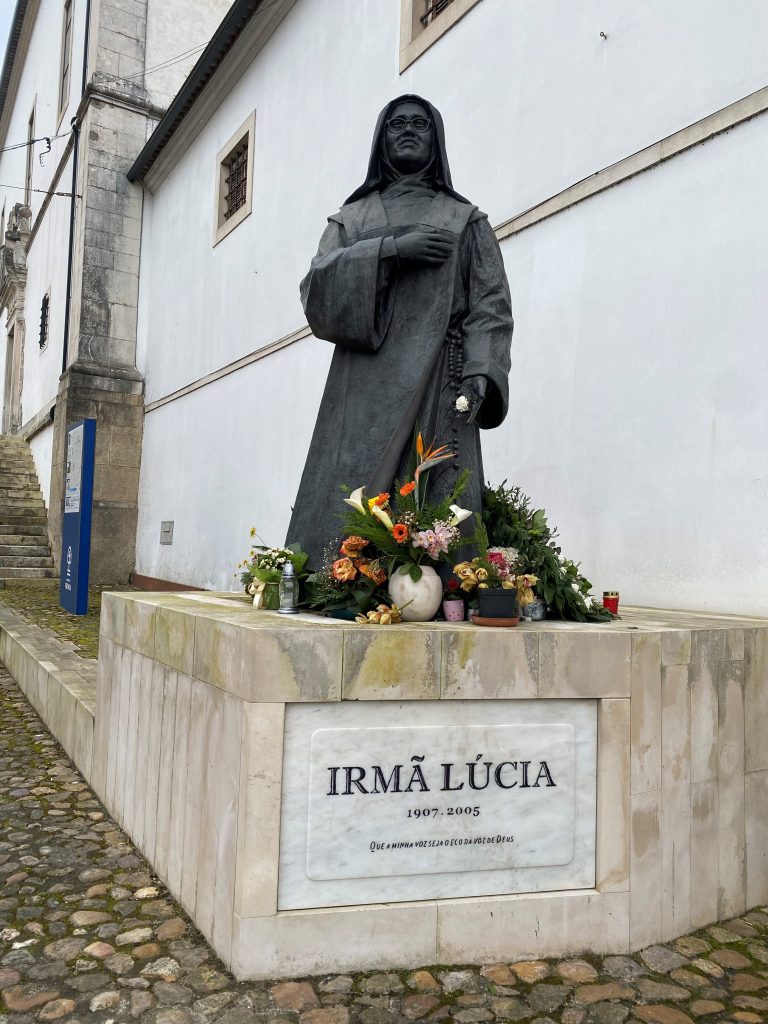
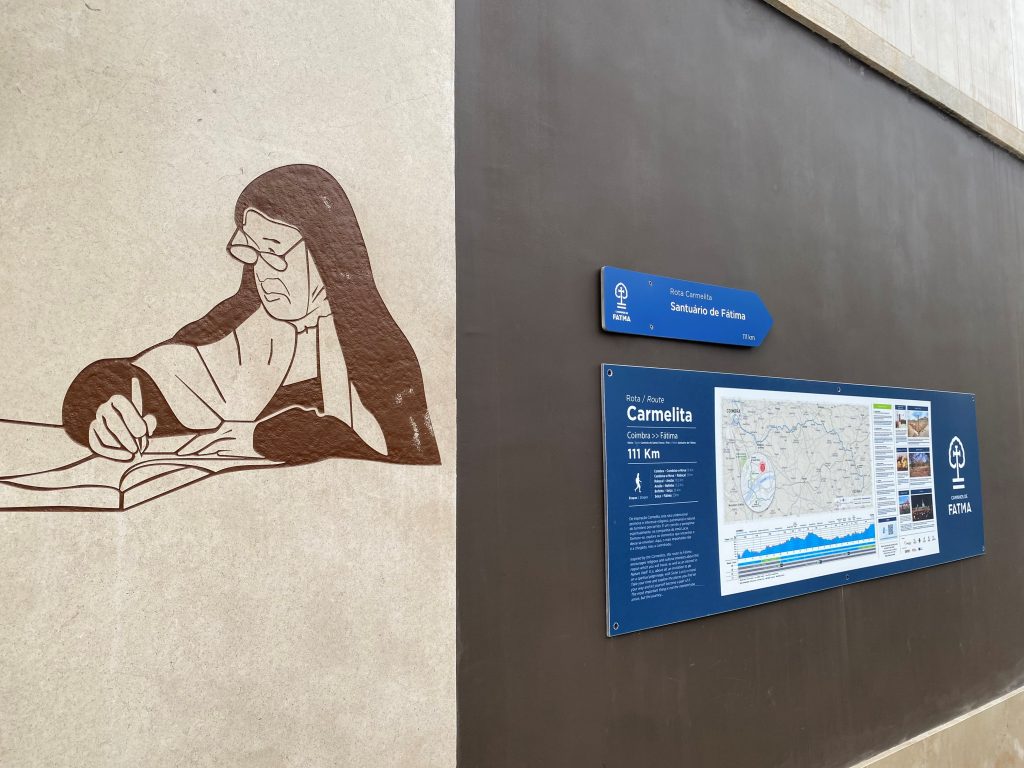
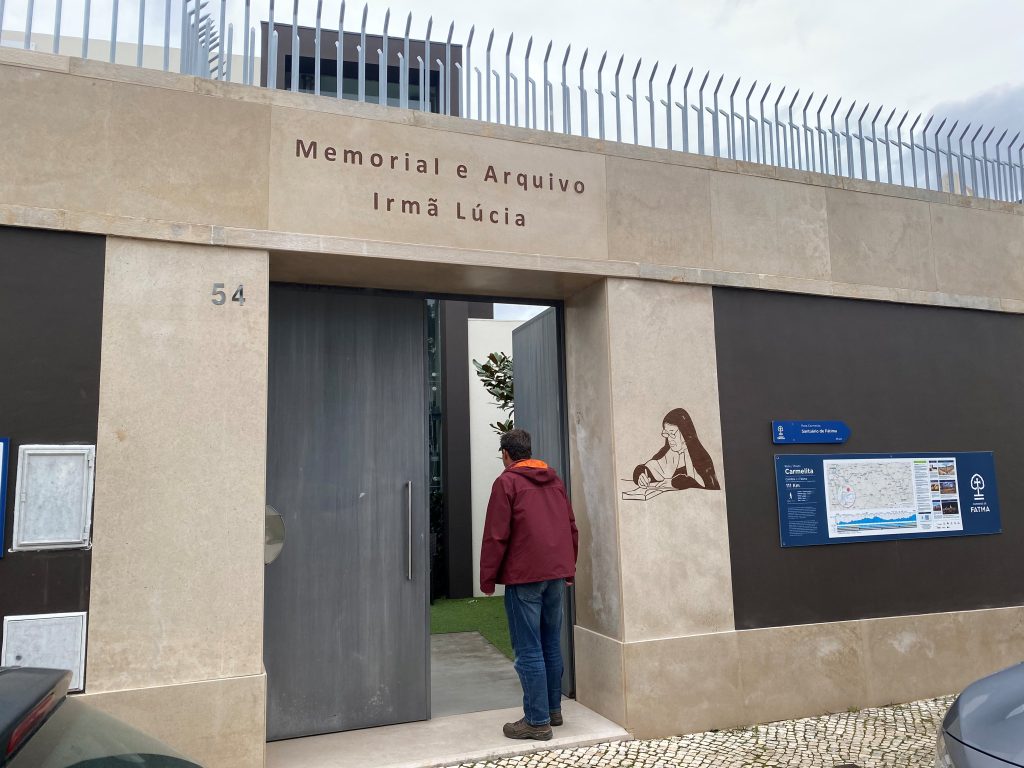
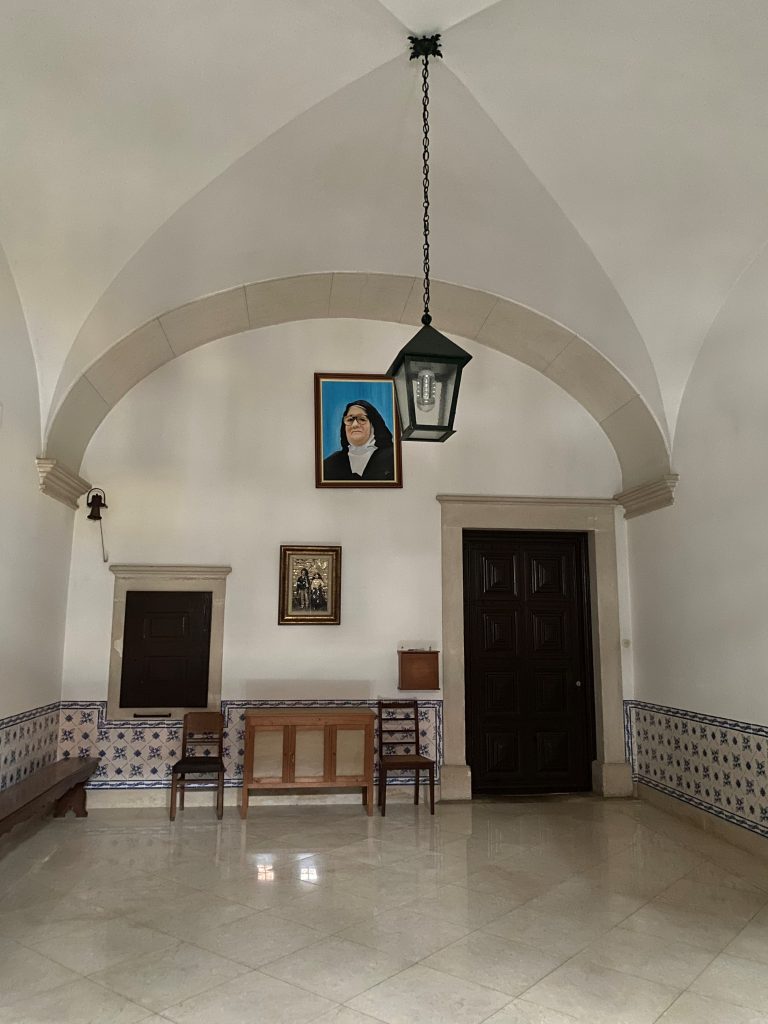
There are websites about the Fatima route, but unfortunately there are no albergues and there is no app included. Some routes are very short and some too long. I adjusted the stages, just to balance the whole caminho for you.
Day 6 Continuing your Caminho
We reached our goal yesterday! The big question is: Did you come back with us on day 5? That means you can go where you like to and continue your journey. Or…
Did you like it so much and would you like to walk further to Santiago de Compostela and continue your pilgrimage? The yellow arrows from Fatima are good, sometimes you’ll see light yellow, but if you pay attention, they will lead you to Tomar.
First to the rich Convent of the Templars in Tomar, 30 km further east from Fatima and then the way to Santiago. You can sleep in between after 17 km in Fungalvaz. Not a bad idea because in Tomar walking up to the castle and monsatry of the Templars is a must. And when your feet doesn’t want to carry you anymore it is really pity. I think you can say that this place is one of the richest places build in history. The Templars where men of the Pope, supported by the church and they were the first to introduce a bank system. Pilgrims could get ‘traveler checks’ for their pilgrimage! You can imagine they had a lot of coin to build their ‘kingdom’ on the way to Jerusalem
.
It is a hard track with lots of big stones and you have to climb and go down again. But then when you are tired like we were; A lovely village with hostel pop up. You have to call when you get there. You could cook there yourself, and you probably will be alone there. There is a restaurant, cafe, and mini-mercado, and big garden where you can sit too.

